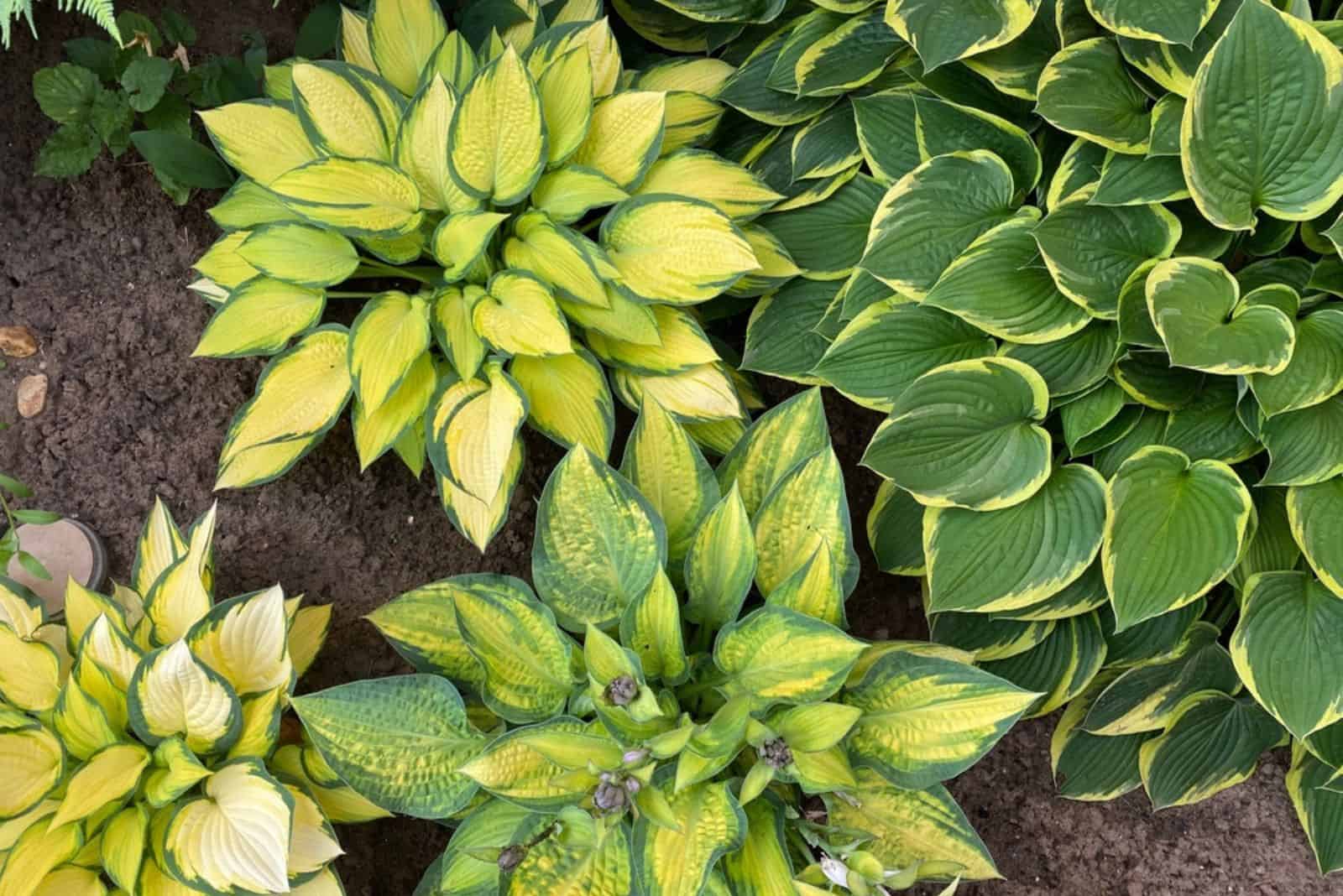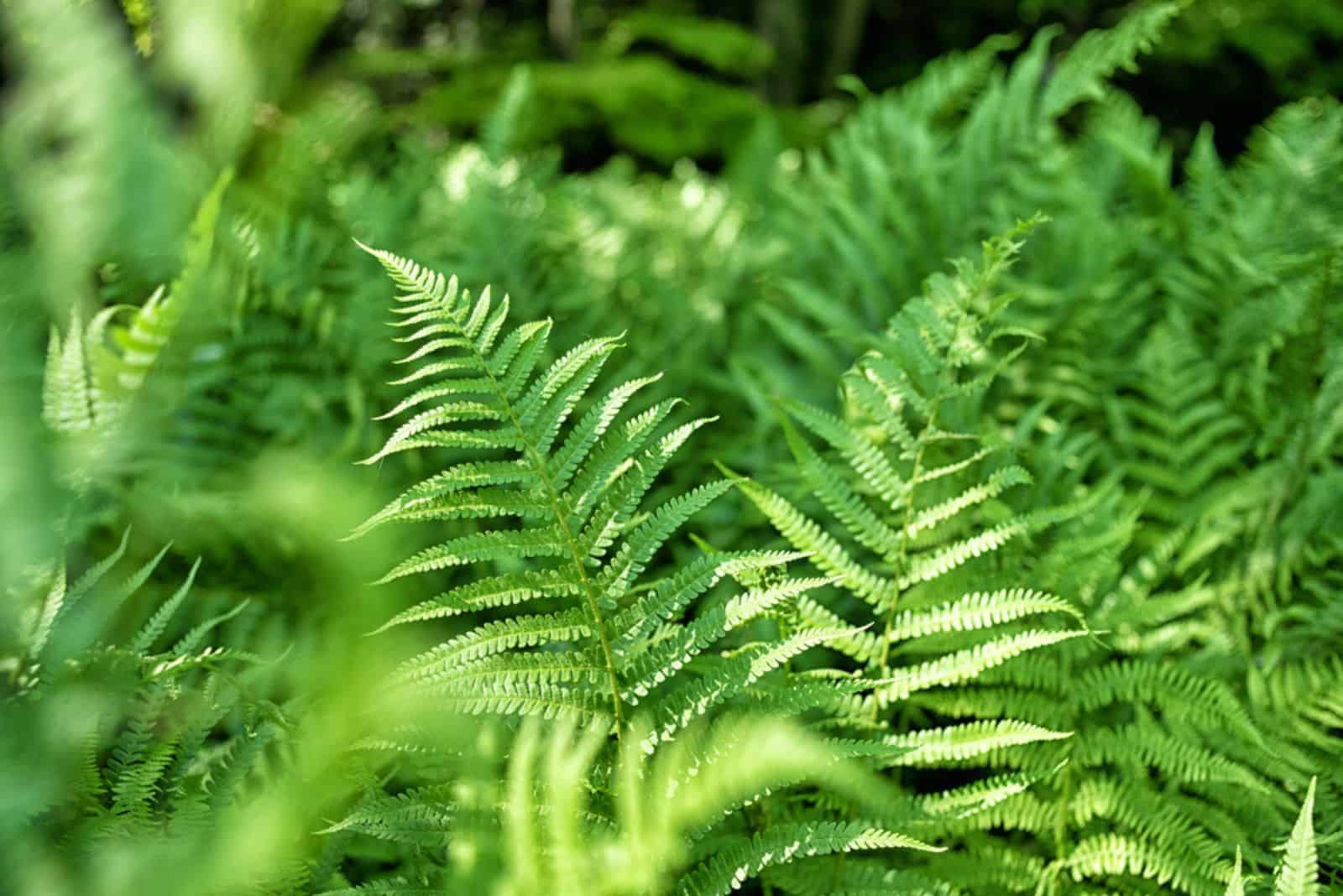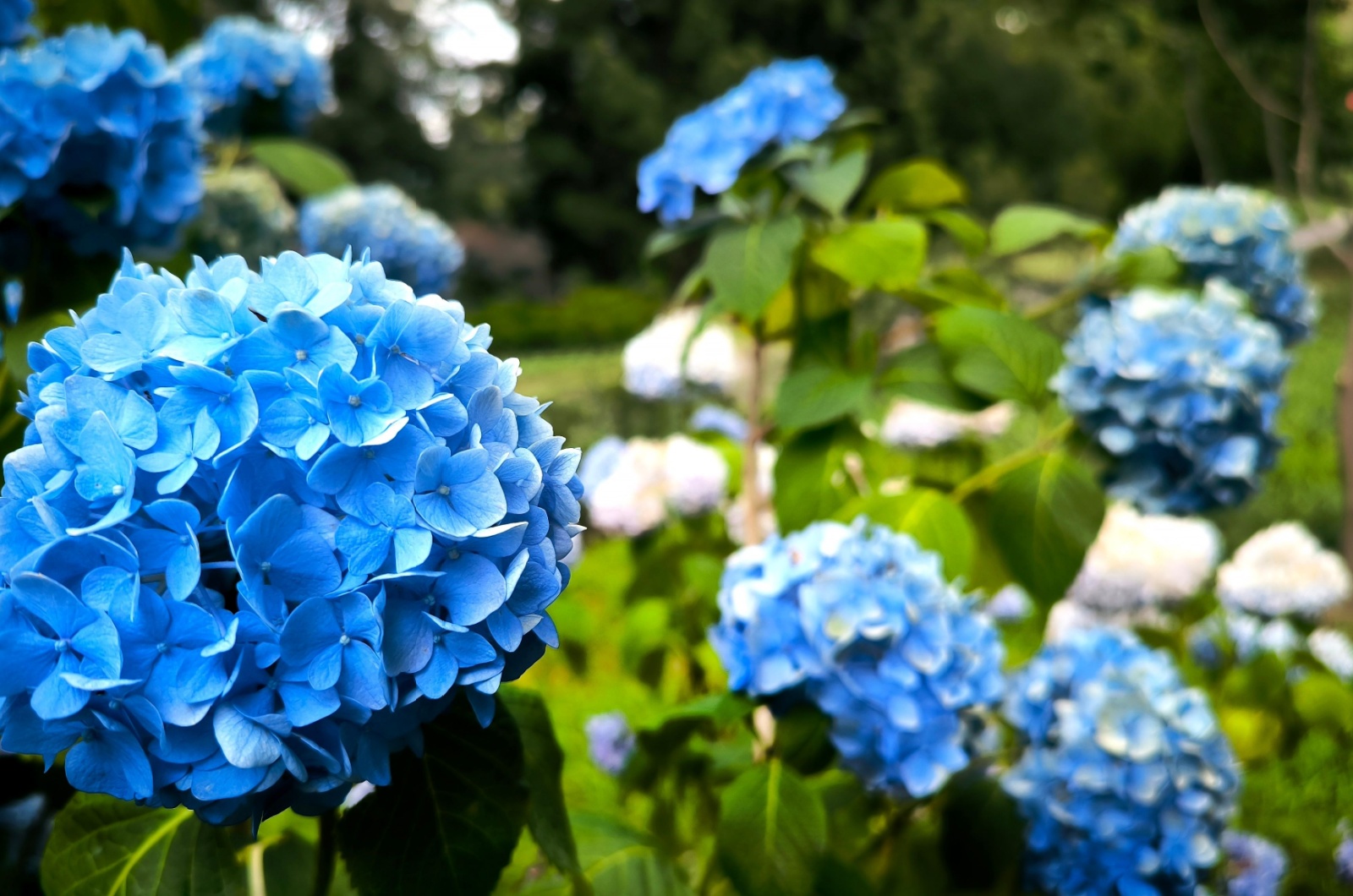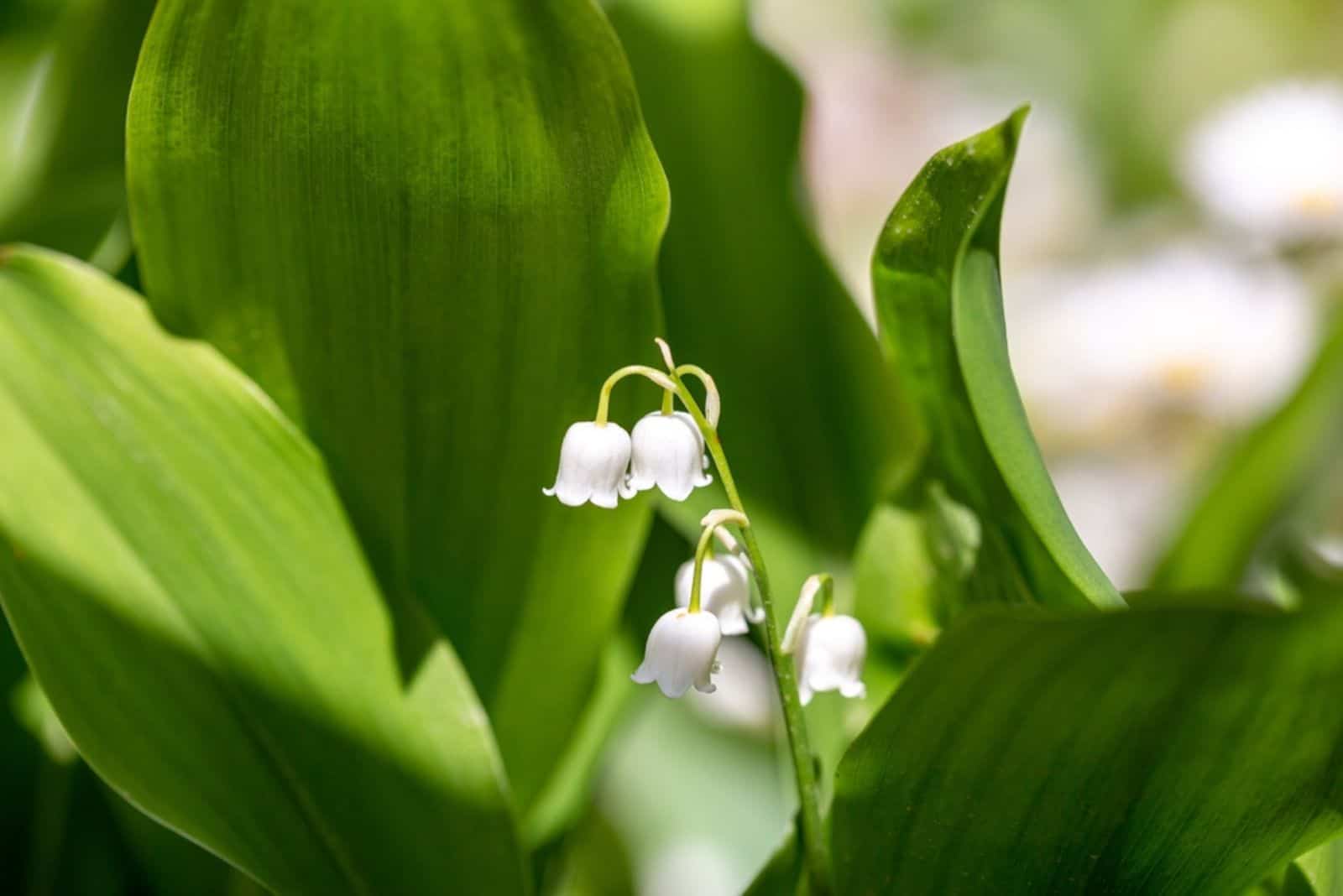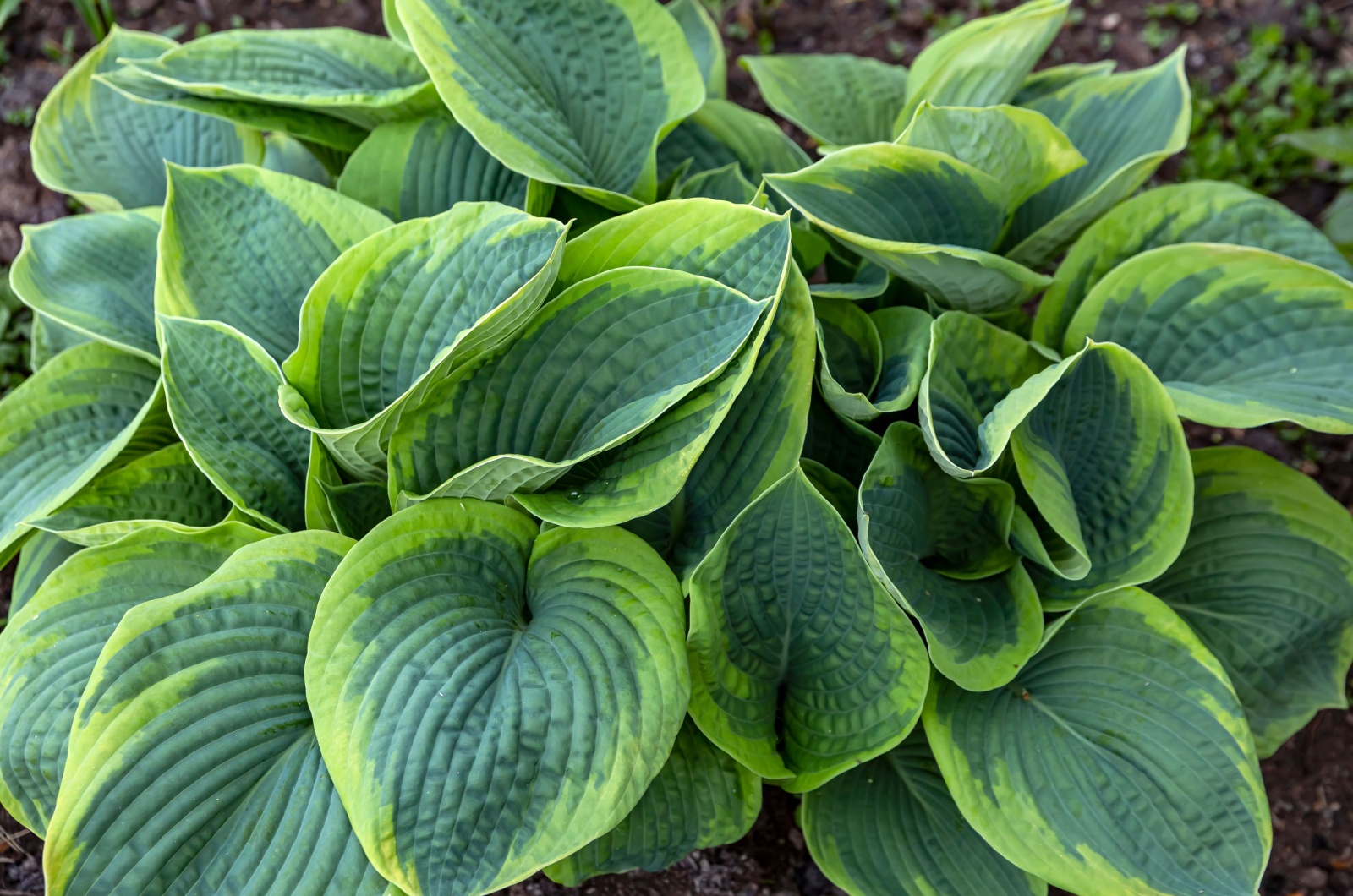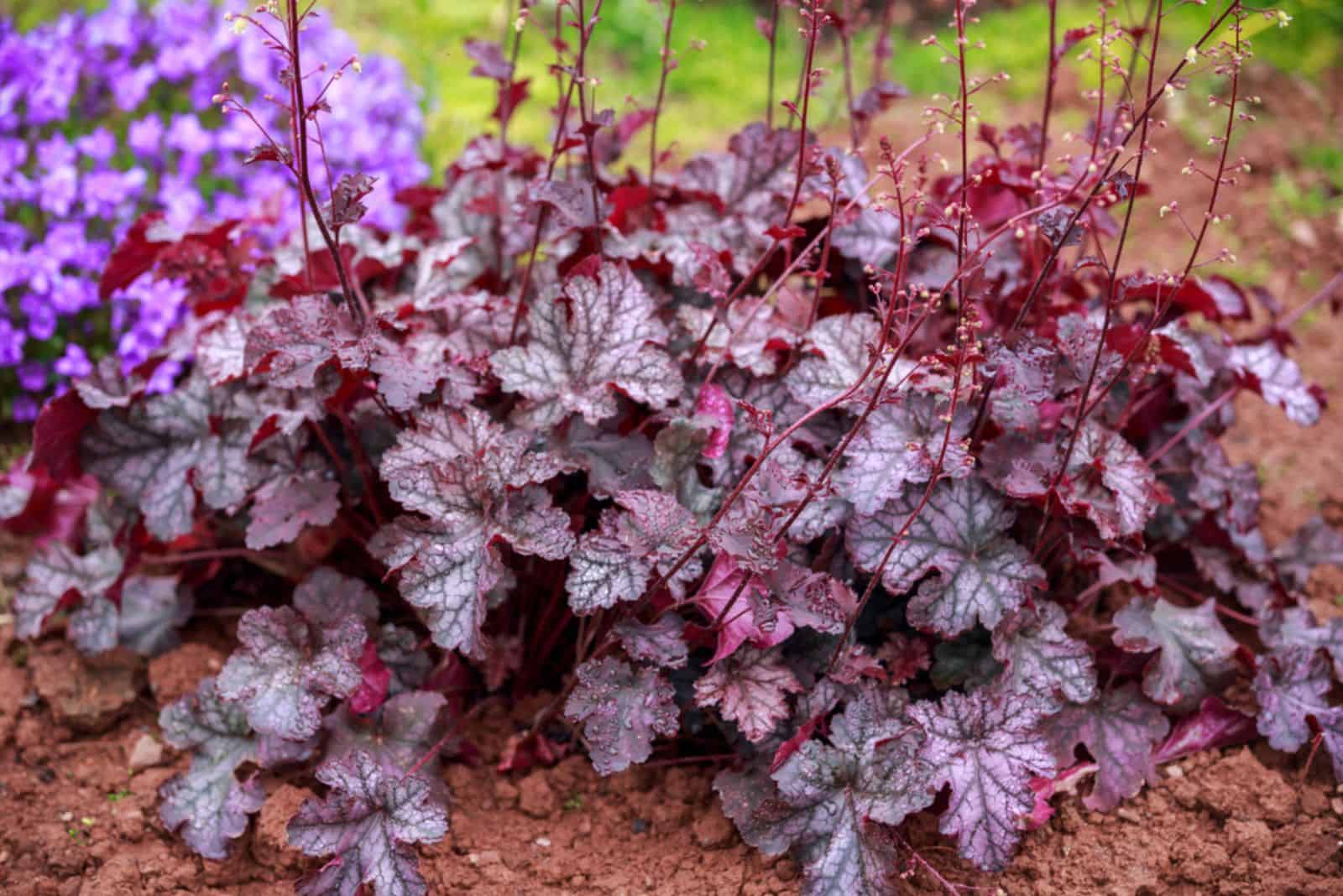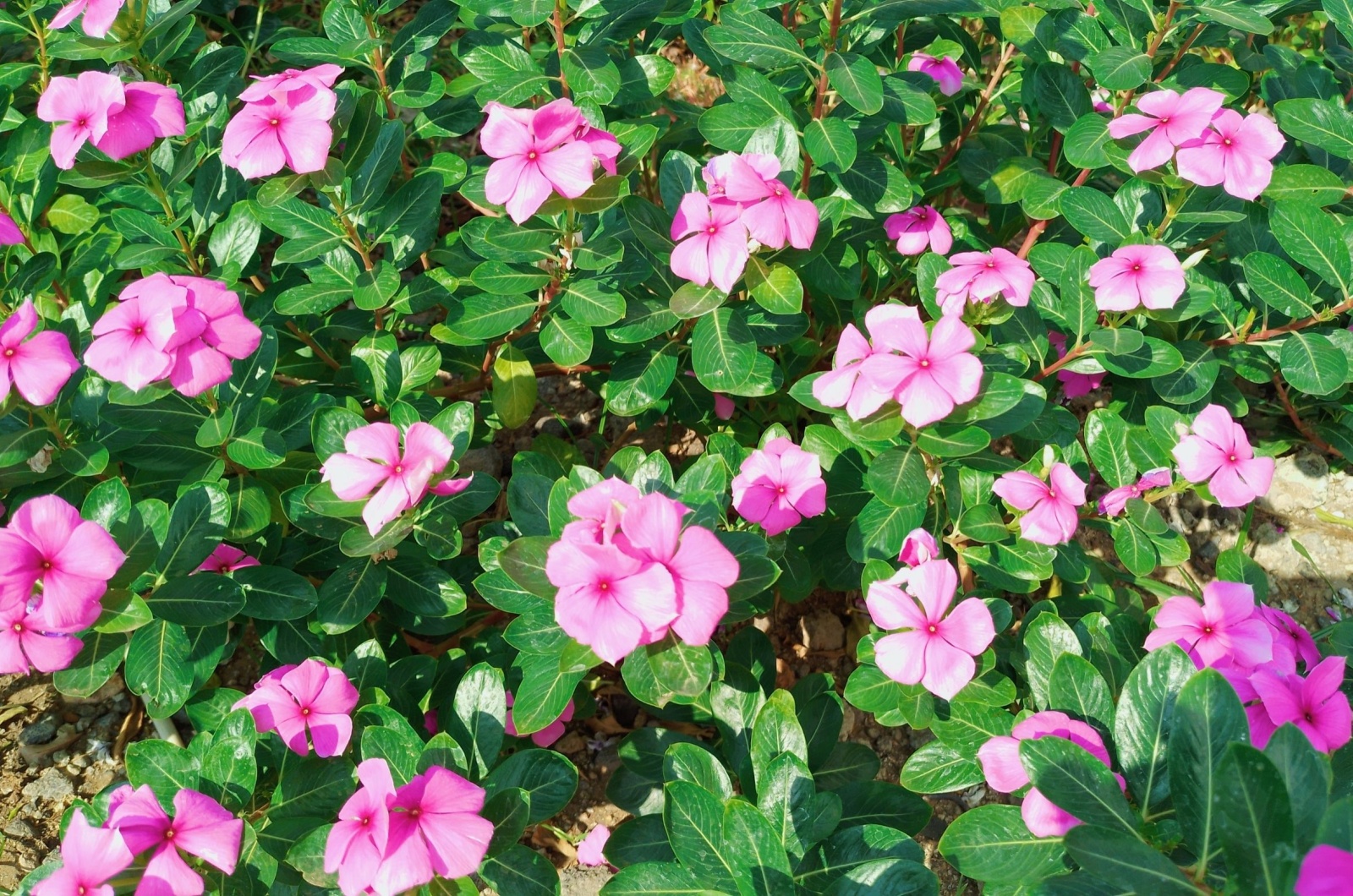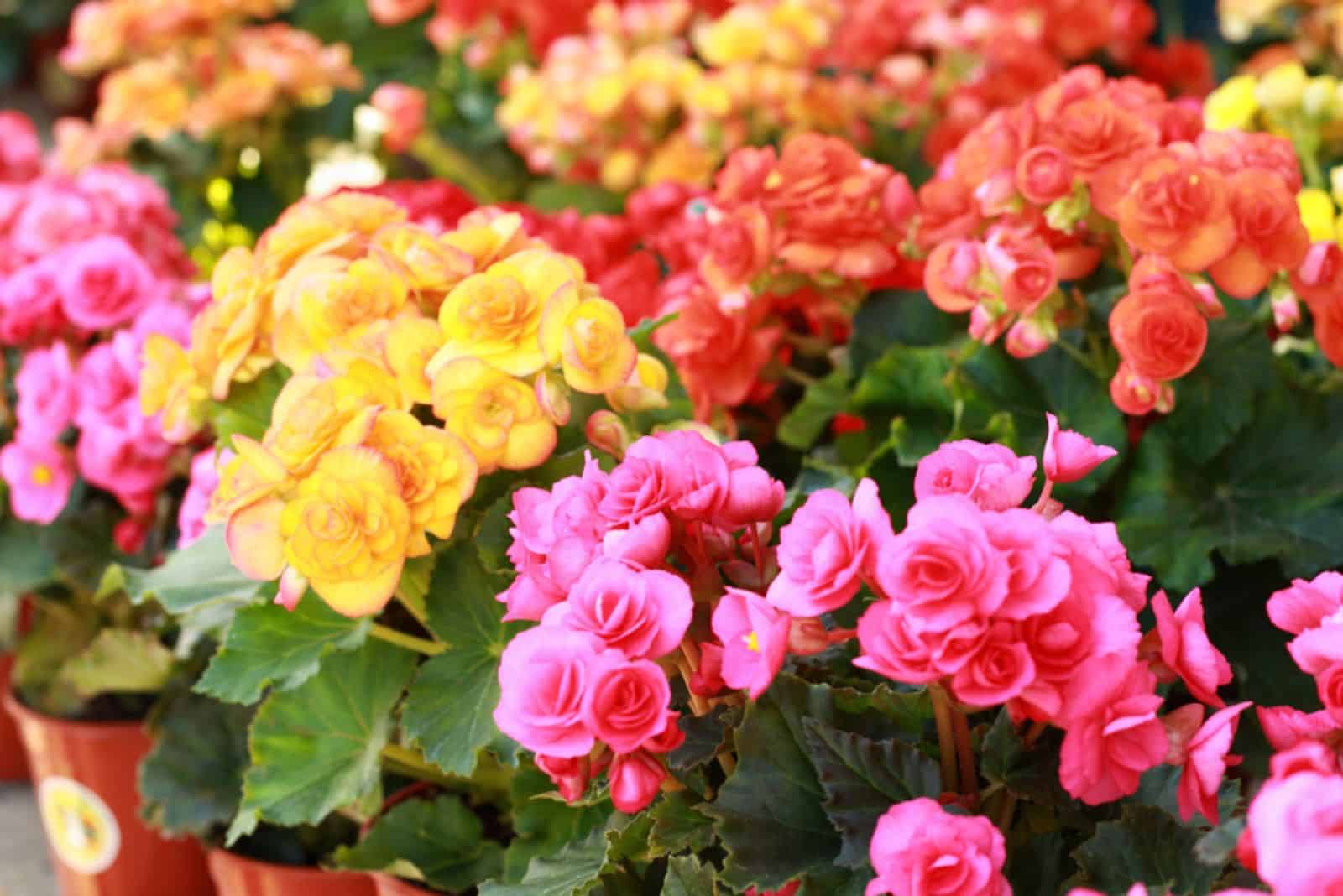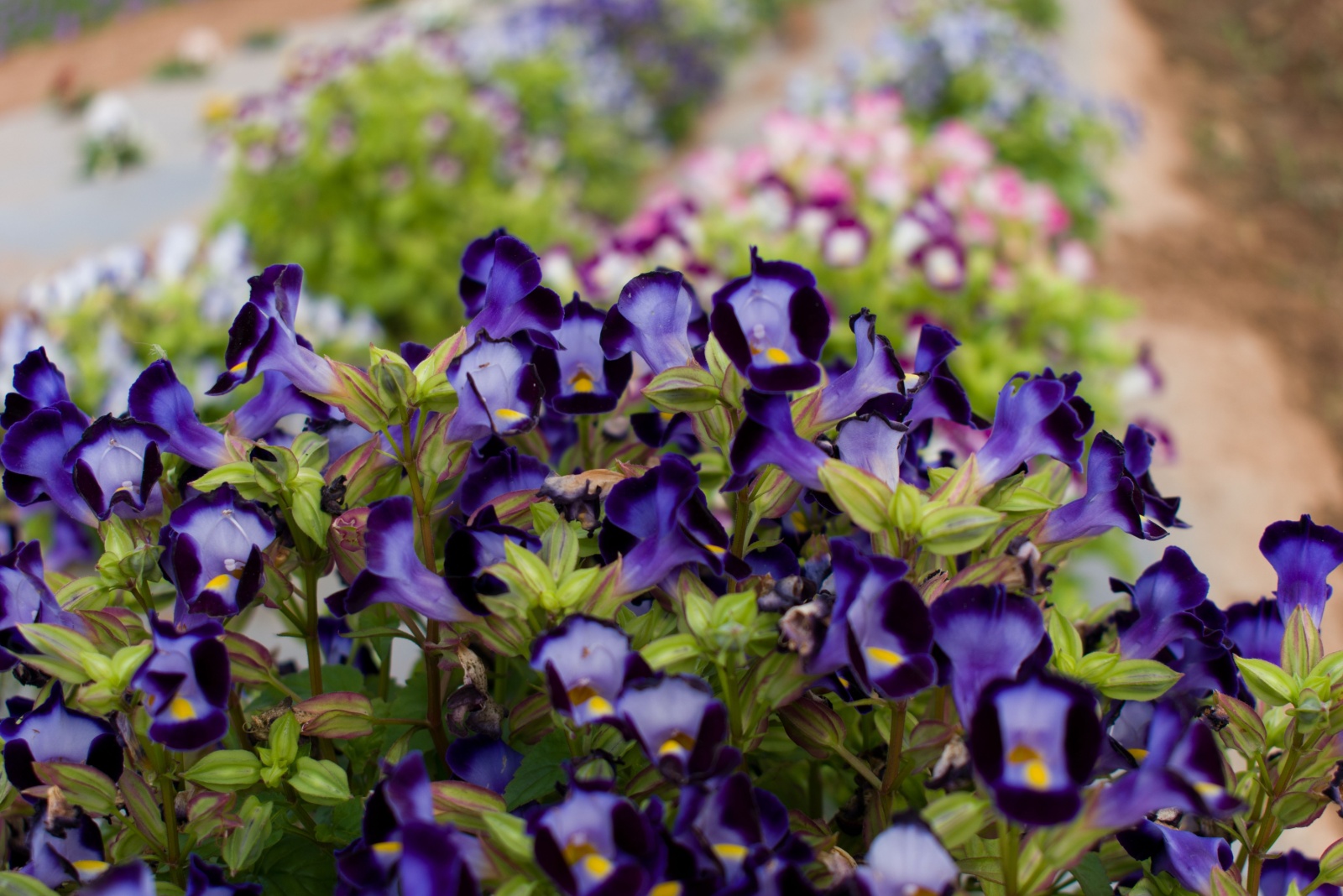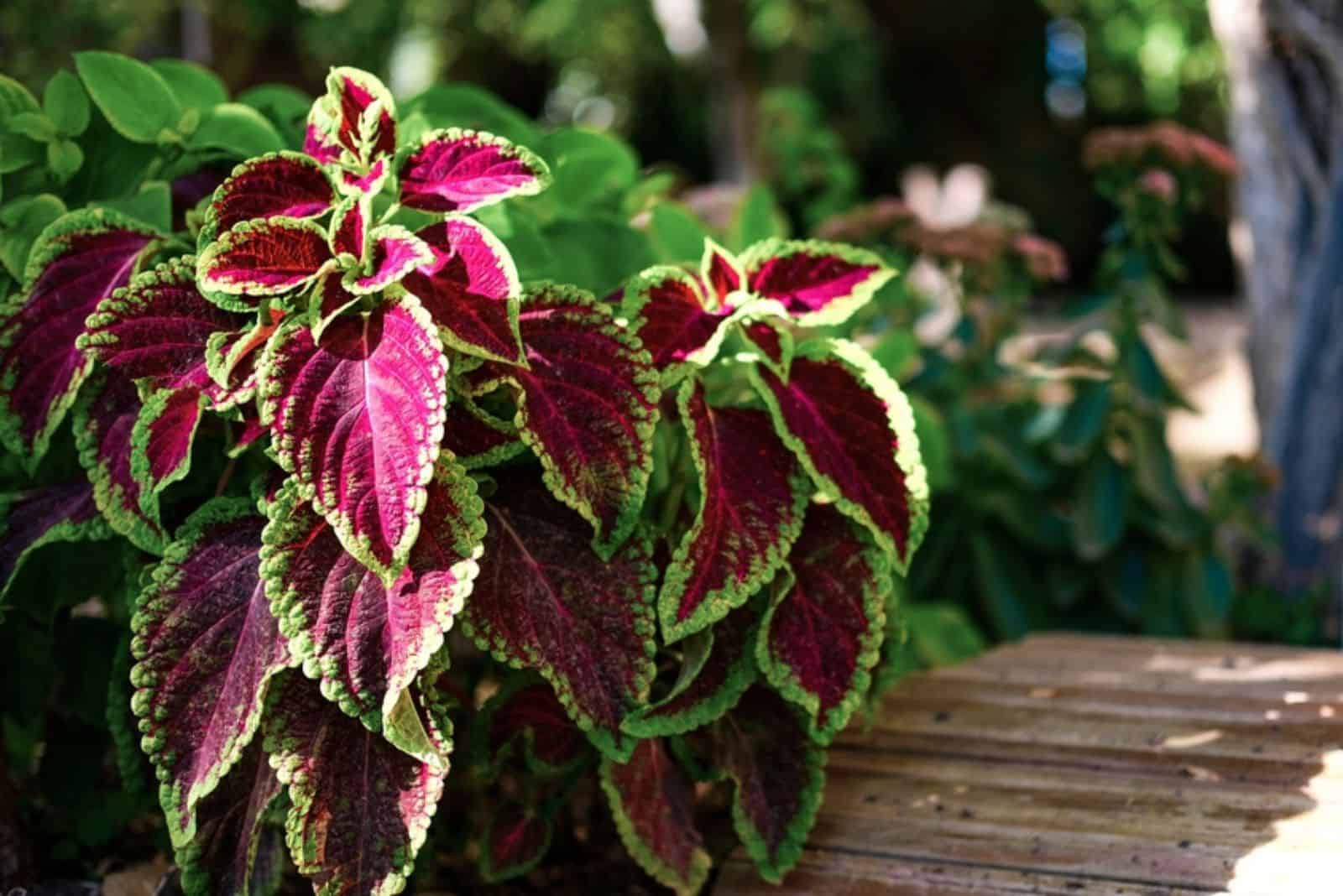If you are looking to add some greenery and beauty to a shady outdoor space, look no further than container gardening!
Even if you don’t have much space, or you only have shaded areas to work with, there are many beautiful plants that can be easily grown in containers in full to partial shade. Trust me, these plants will definitely add some color to those dark spaces!
What’s also great is that you can put them basically anywhere – a shaded garden or balcony, under trees, next to a building, or in shady areas of your yard.
So, if you want to transform your shady garden into a lush and vibrant oasis, consider growing some of these shade-loving container plants!
1. Ferns
If you want your garden to look like a mini jungle, then you will absolutely adore ferns!
Ferns are lush and elegant plants that are perfect for growing in containers because they have shallow roots. With their green feathery fronds, they bring a touch of grace and natural beauty to any space.
Since they do a pretty good job tolerating shade, you can easily place their containers wherever you want. However, please consider their temperature requirements – they grow best in temperatures between 65 and 75 degrees Fahrenheit.
Other than that, they prefer growing in moist and well-draining soil. It is important to water them regularly and make sure that the humidity levels are high enough for them to grow properly.
There are many evergreen ferns that you can grow, although the most commonly cultivated ones are the Boston fern and Maidenhair fern.
2. Hydrangeas
Hydrangeas are one of the most colorful shade-loving perennials out there!
These flowering shrubs produce clusters of vibrant flowers in shades of pink, blue, purple, and white. The flower color might change depending on the pH levels in the soil!
Hydrangeas also produce lush elliptical foliage that combines perfectly with these large flower clusters.
They grow best in partial shade, although some varieties can tolerate full sun exposure. Hydrangeas require well-draining soil that retains moisture. Regular watering is required to keep the soil evenly moist.
Fertilizing hydrangeas at the beginning of the season can encourage more blooms. For a longer lasting flower display, feed hydrangeas frequently in the spring and summer.
When growing them in containers, make sure to find a smaller variety such as the ‘Summer Crush’ hydrangea. Use a pot with a minimum diameter of 45 cm. Before planting, mix your soil with some compost.
3. Lily Of The Valley
Lily of the Valley is a charming perennial plant that produces fragrant bell-shaped flowers with a beautiful white color that gives your garden a dreamy appearance.
In addition to these sweet flowers, the plant also produces glossy green leaves and tiny red berries (they are not edible).
It is relatively easy to grow Lily of the Valley. These plants are hardy in zones 2 to 9 and prefer growing in well-draining soil. This lovely plant can grow in full sun and partial shade.
Once the top few inches of the soil have dried out, the plant needs to be watered. To allow the water to evaporate during the day, it is best to water the plant early in the morning.
4. Hostas
Meet the Queen of garden shade – Hostas! These are easy-to-care-for plants that produce an abundance of leaves with distinctive patterns and shapes. The leaves can be green, yellow, or white, depending on the variety.
The plant can grow in different soil types, though it prefers growing in moist and nutrient-rich soil. They grow best in partial shade but they can tolerate some direct sunlight exposure.
Some types of hostas can reach up to 4 feet tall, while certain dwarf ones grow only 2 inches. You can always prune the plant to keep it a particular size and shape.
5. Heuchera (Coral Bells)
Heuchera, otherwise known as Coral bells, are colorful perennial plants that can grow well in shade. They exhibit stunning displays of leaves in various shades of green, purple, burgundy, and even silver!
These plants are relatively easy to grow. All you have to do is provide them with some well-draining soil and water from time to time. Although certain varieties can tolerate dryness, most of them require consistent moisture.
You can fertilize them with slow-release fertilizer at the beginning of the season to encourage more robust growth.
6. Impatiens
These are popular annual flowers known for their shade-tolerance abilities. Impatiens produces masses of colorful flowers in pink, red, white, purple, and even more colors!
They can easily brighten up any gloomy corner of your yard. You can even grow them as statement plants or use them for borders and containers.
When it comes to plant care, they don’t require much maintenance. They prefer growing in well-draining soil that is consistently moist, so they should be regularly watered.
Impatiens require moderate fertilization. The best fertilizer for Impatiens would be a balanced water-soluble fertilizer applied every two weeks during the growing season.
7. Begonias
Begonias are a versatile group of plants that provide a wide range of colors, shapes, sizes, and textures. These colorful plants are ideal for shady areas in your garden.
Since they have shallow roots, Begonias can be easily grown in containers. Trailing Begonias are perfect for hanging baskets. You can put these containers in partial shade; however, Begonias can grow in full sun as well!
Begonias prefer well-draining soil. They require frequent watering to keep the soil consistently moist, just be careful not to overwater them!
8. Torenia (Wishbone Flower)
Torenia, otherwise known as the Wishbone flower, is a lovely annual plant that can grow and thrive in shady conditions. With its delicate trumpet-shaped flowers that come in several vibrant colors, the Torenia truly adds a splash of beauty to any shade garden or container.
These plants prefer growing in moist and well-draining soil. They can benefit from occasional feeding as well.
A Torenia is a great choice for gardeners who want to attract hummingbirds and butterflies to their garden.
9. Coleus
Coleus is an eye-catching plant with stunning foliage. The different colors and patterns of the foliage provide endless possibilities for creating unique combinations in container gardens or shady beds.
This plant prefers growing in partial shade, although it can tolerate some sun in the morning. It can adapt to different growing conditions, though it grows best in moist soil.
Regular watering is required, especially during hot and dry periods. Utilizing granular fertilizer during the growing season can boost growth and foliage production.
I hope you enjoyed reading this article!
Until next time.

